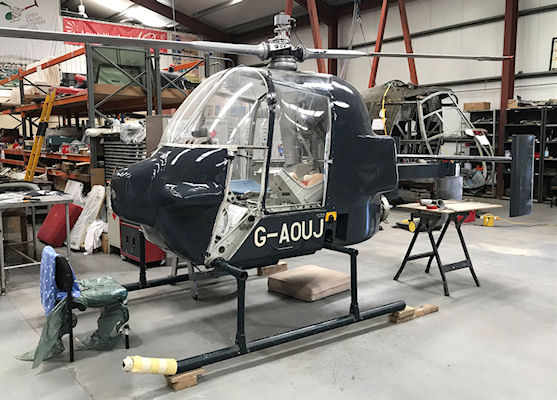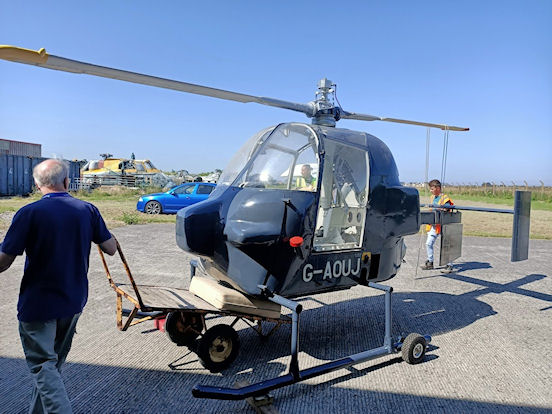Restoration of Fairey Ultra-Light G-AOUJ
History of the Fairey Ultra-LightThe Museum's Fairey Ultra Light, G-AOUJ / XJ928, tip-jet helicopter c/n F9424,is one of four prototypes built by Fairey Aviation Ltd in Hayes, Middlesex, in 1954/55, in response to British Army requirements for an air observation platform. XJ928 was the second prototype, making its first flight, from White Waltham, on 20th March 1956. Just before this first flight the Ministry of Supply decided to withdraw their support, leaving the Army reliant on the contemporary Saunders-Roe Skeeter. Fairey however, continued to build a further two Ultra-Lights as a private venture development. After the Ministry cancellation, hydraulically powered cyclic controls and a modified cabin were fitted to XJ928 and it was registered G-AOUJ in August 1956. The modified cabin was designed for emergency freight transport and allowed a stretcher to be loaded diagonally alongside the pilot. It flew for the first time with the modifications incorporated, in September 1957. One or both of the Ultra-Lights, G-AOUJ and G-AOUK, appeared at the SBAC Exhibitions and Displays at Farnborough in the years 1955-58, taking off and landing on a moving Army 3-ton flat bed truck. Spectators were especially impressed by their agility, lively and rapid climb rate and by fast descents in autorotation. The British Admiralty expressed interest in the ULH as a potential light, frigate-borne, anti-submarine helicopter. Sea trials with an Ultra-Light were conducted in 1958 from HMS Undaunted but, with the Saunders-Roe P.531 prototype (leading to the Westland Wasp), showing promise, Navy interest in the Ultra-Light ended in 1959. |
|
|
|
||
With no further customer interest, Fairey abandoned the project at the end of 1959. G-AOUJ was partially dismantled, with blades, engine and rotorhead removed, and its registration lapsed. After standing at White Waltham for some time it was sold off for scrap, but was rescued by enthusiast Peter Swettenham, who took the remains to his home on a farm near Harlow in Essex. |
||
|
In 1977 Museum Founder Elfan ap Rees decided to make a determined effort to trace G-AOUJ and it was eventually rediscovered, albeit less its engine, tail unit, rotors and other parts, and suffering seriously from corrosion. Elfan moved G-AOUJ to Weston-super-Mare into his personal collection. Meanwhile in a search for missing parts the original tailboom was discovered at the Royal Aircraft Establishment at Bedford, two original rotor blades were found and a Palouste engine acquired. By 1991 G-AOUJ had been partially re-assembled by Museum volunteers, although it still lacked a rotorhead. Partly due to a heavy workload and shortage of covered space at The Museum, the Ultra Light was loaned to the Cotswold Aircraft Restoration Group, in Gloucestershire, so that restoration could continue there. Some valuable work was being done until closure of RAF Innsworth was announced and CARG's workshop had to be re-located to Quedgeley in 2002. After another enforced move in 2007, Peter Turner, a Helicopter Museum trustee, offered temporary hangar storage for G-AOUJ, at Gloucestershire Airport, until it was returned to Weston-super-Mare in November 2010. |
|
|
||
Restoration of Fairey Ultra-Light G-AOUJ / XJ928 |
||
| To avoid diverting effort away from current helicopter restoration and conservation projects a small team of three new volunteers, all with previous aviation experience, was recruited in 2010. Early in February 2011 the new team started on the task of identifying the many separate components which had arrived three months previously. They visited the Midland Air Museum, at Coventry Airport, to view Ultra-Light G-APJJ, the last to be built (see below). | ||
 |
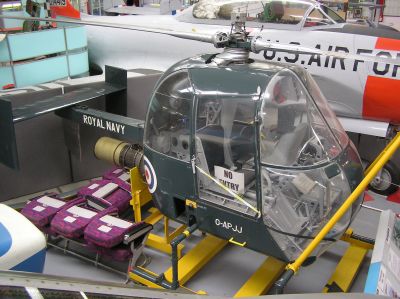 |
|
Fairey Ultra-Light, G-AOUJ,
soon after arriving at The Helicopter Museum on 3rd November
2010. |
Fairey Ultra-Light G-APJJ displayed
at the Midland Air Museum, Coventry |
|
 |
 |
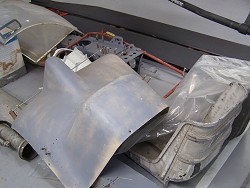 |
||
| The Museum had acquired a Palouste turbine but not from an Ultra-Light. | Opposite ends of G-AOUJ's two rotor blades, showing a tip jet. | Some of G-AOUJ's components which have returned to The Museum. | ||
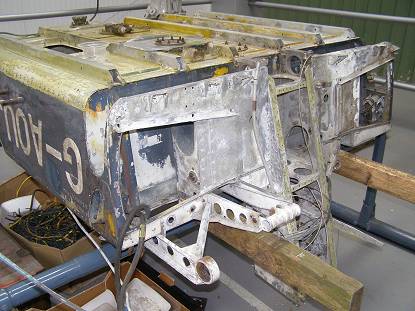 |
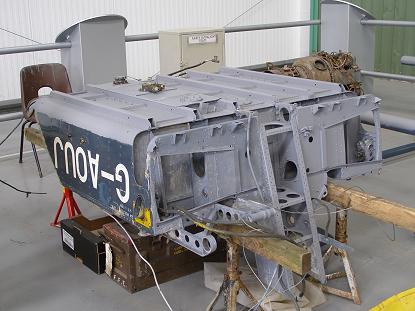 |
|
| In March 2011 work started on the restoration of the fuselage box structure which forms the chassis on which the Ultra-Light was built. The sides of the box, carrying the civil registration in white, on dark, matt, blue paint, were in good condition but much of the assembly showed serious corrosion, which was treated before application of etch primer to areas of bare metal. | ||
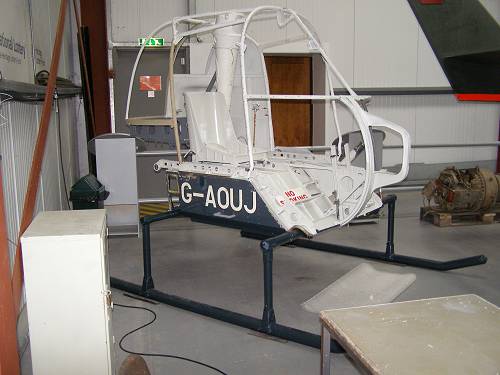 |
 |
|
| Photographed on 20th August 2011, G-AOUJ's fuselage box had been painted and turned upright with the rotor head pylon installed, the pilot's seat in place and the cockpit canopy frame temporarily fitted. | ||
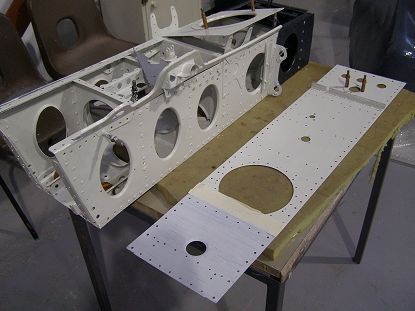 |
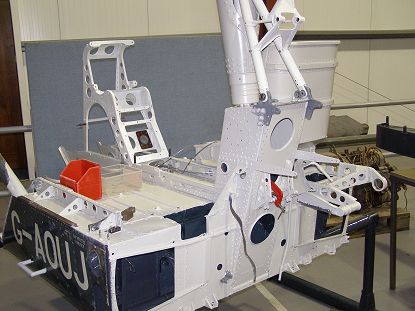 |
|
| On 26th November 2011 sections of the forward tail boom (above left) were being assembled after painting and the instrument panel housing had been fitted to the fuselage box (above right). | ||
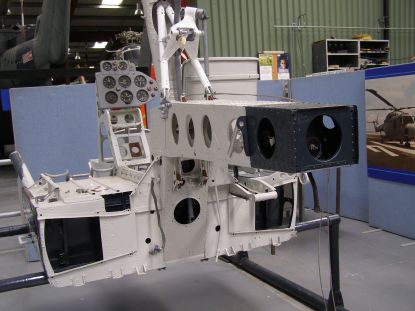 |
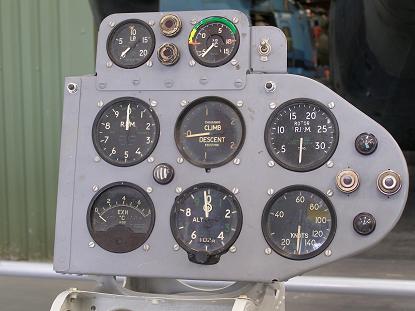 |
|
| By May 2012 the partially completed tail boom (above left) was attached to the rear of the fuselage assembly and the pilot's panel, with a full set of instruments, was fitted onto the central console (above right). After the Cotswold Aircraft Restoration Group lost their original workshop facilities in Gloucestershire, in 2002, the panel and instruments had been housed separately from the helicopter and were not reunited until after G-AOUJ's return to The Museum in November 2010. The asymmetric layout of the instrument panel, in G-AOUJ, resulted from modifications, in 1957, to allow the front-loading of medical stretchers. | ||
 |
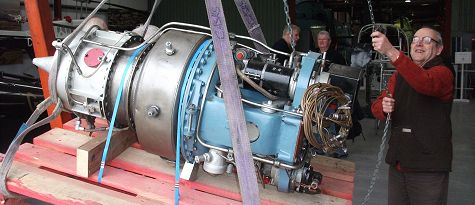 |
|
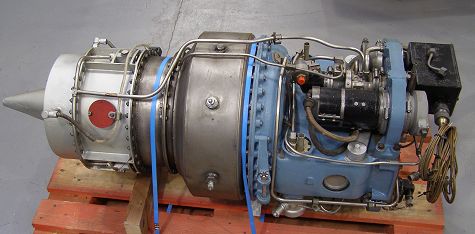 |
||
| Photograph above left, taken on 6th October 2012, shows another view of the instrument panel and pedestal. Those above right show the return of The Museum's Turbomeca Palouste engine, after refurbishment by volunteers at the Rolls-Royce Heritage Trust in Patchway, Bristol who made minor modifications to the Palouste which eased connection to the Ultra-Light mountings. | ||
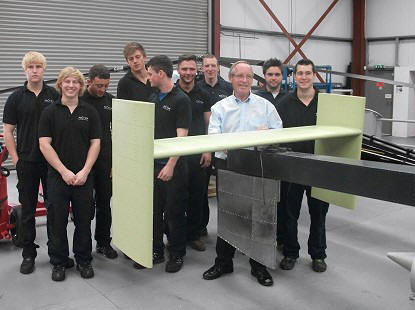 |
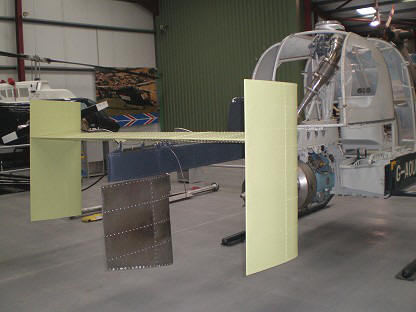 |
|
| Apprentices at Vector Aerospace, providers of helicopter maintenance, repair and overhaul (MRO) services who are based in Hampshire, have manufactured a new horizontal tailplane unit, with endplate fins, for G-AOUJ and nine of them (above) duly delivered the unit to The Museum and trial-fitted it to the rectangular-section tail boom, on 15th August 2013. The unit was subsequently spray painted, in dark blue, by Museum volunteers. | ||
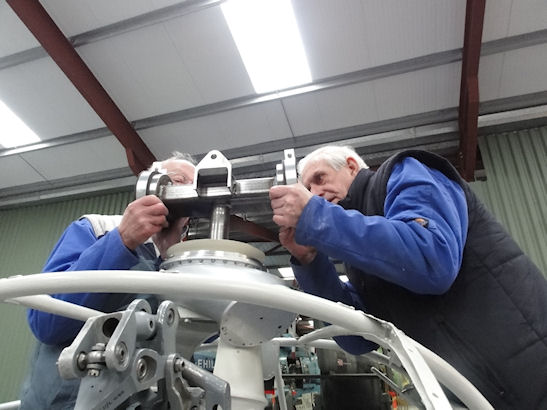 |
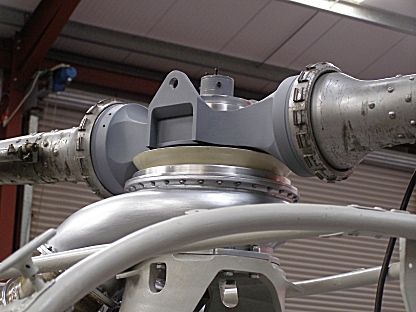 |
|
| It had always been understood that G-AOUJ's original
main rotor head was missing and most unlikely to re-appear. A
replica head would have to be produced in-house that could safely
withstand the significant blade loading, even for static display.
Fortunately the required skills and machine tools were available
at The Museum and a minimal version, manufactured in early 2013,
was tested successfully. Following further photography and measurement
of G-APJJ at the Midland Air Museum, work commenced on the final
version. The photograph above right shows the final version, fully installed on G-AOUJ and with blades attached. |
||
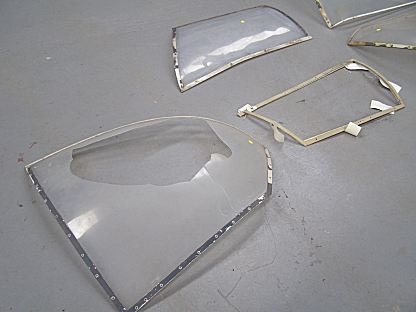 |
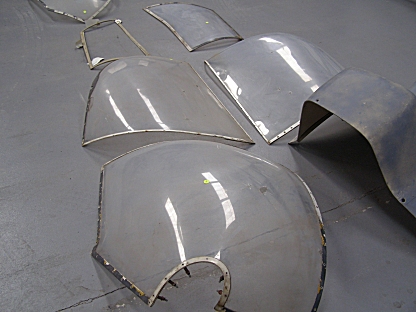 |
|
A major challenge was the manufacture of cockpit glazing panels to replace the existing items which suffered from breakage, severe damage and increasing opacity. The Museum did not have the resources required to carry out this work and the new glazing panels would have to be manufactured commercially. In these circumstances The Museum applied to Arts Council England (ACE) for grants from the Council's "PReservation of Industrial and Scientific Material" (PRISM) fund to enable continuation of the project. The Helicopter Museum was glad to learn, that they had successfully secured two grants, totalling just over £14,000 to complete the restoration of Ultra-Light G-AOUJ. Replacement cockpit glazing panels were manufactured by PPA Group, in Deeside, Flintshire and delivered in early 2015. |
||
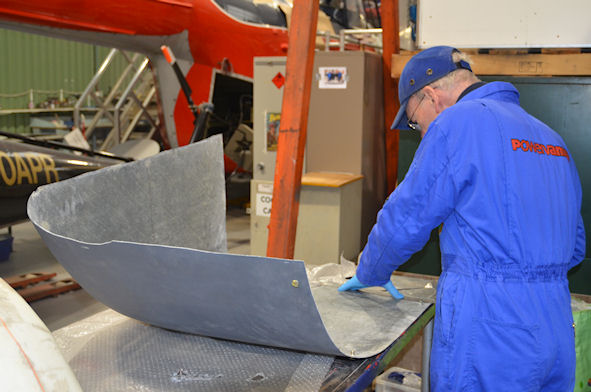 |
 |
|
New front panels were made in the Museum's workshop. |
||
|
|
|
|
Restored G-A0UJ
was finally rolled out in July 2021 |
||
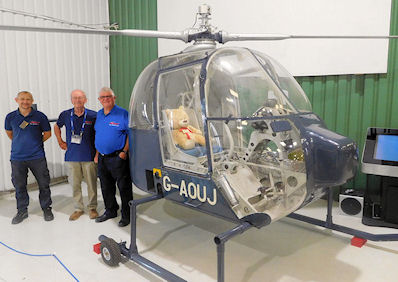 |
||
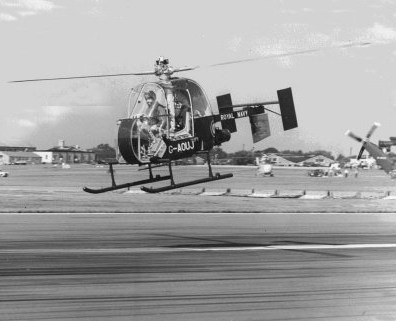 Ultra-Light
G-AOUJ, in Royal Navy scheme, displayed at the 1958 Farnborough
Show with Fairey test pilot Lt.Cdr John G.P. Morton OBE at the
controls. Earlier in 1958 Morton flew trials of G-AOUJ, in Arctic
conditions, in Canada.
Ultra-Light
G-AOUJ, in Royal Navy scheme, displayed at the 1958 Farnborough
Show with Fairey test pilot Lt.Cdr John G.P. Morton OBE at the
controls. Earlier in 1958 Morton flew trials of G-AOUJ, in Arctic
conditions, in Canada.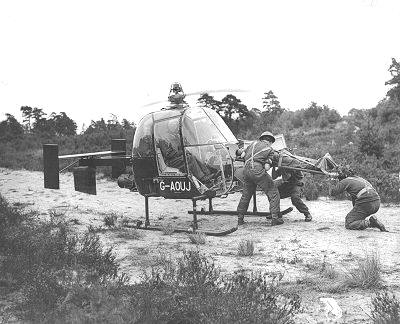 G-AOUJ,
modified to carry a front-loading stretcher and flown by Peter
Twiss, a Fairey Aviation test pilot from 1946 to 1960, took
part in a nuclear war casualty evacuation exercise, near Aldershot,
with the RAMC in October 1958.
G-AOUJ,
modified to carry a front-loading stretcher and flown by Peter
Twiss, a Fairey Aviation test pilot from 1946 to 1960, took
part in a nuclear war casualty evacuation exercise, near Aldershot,
with the RAMC in October 1958.

